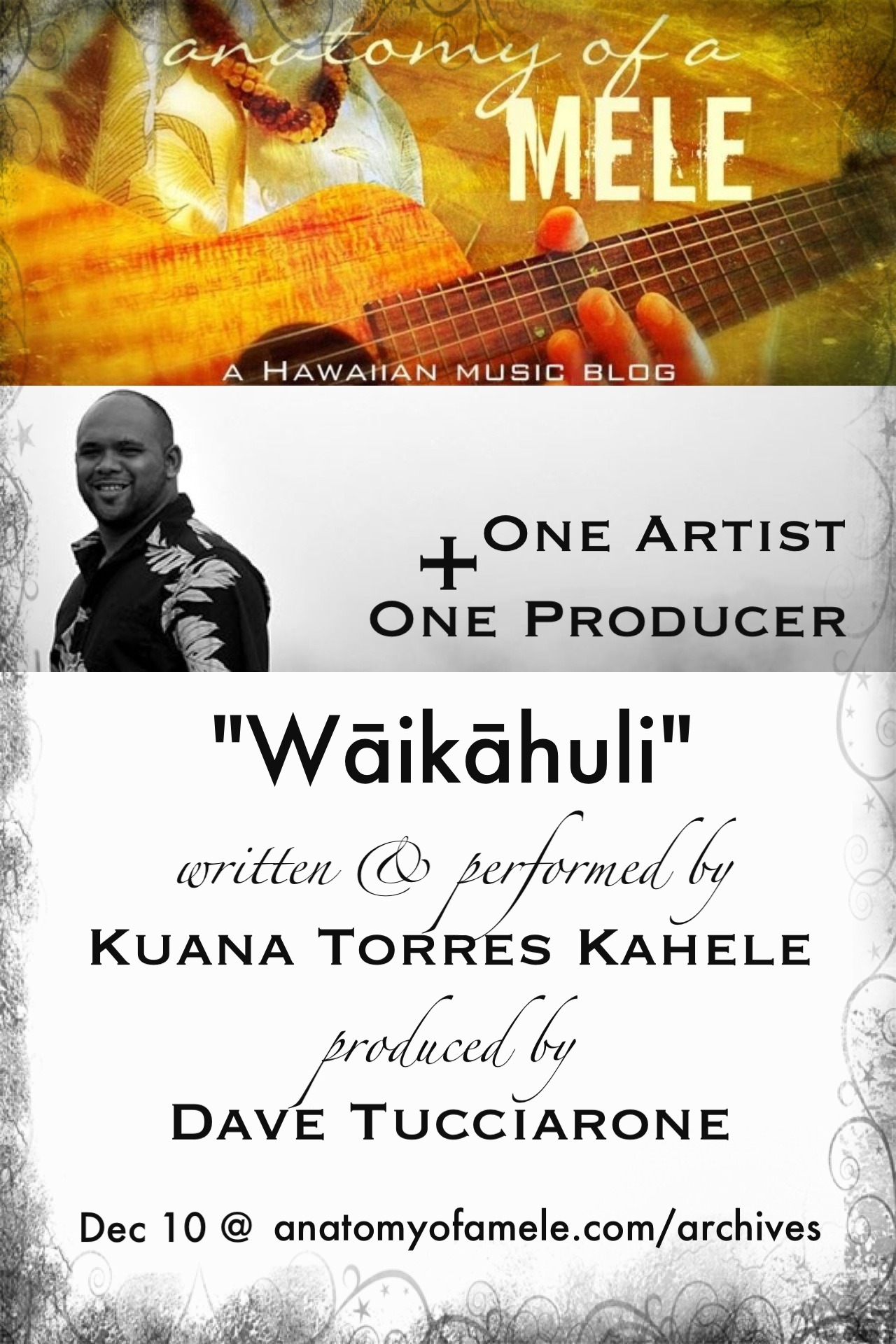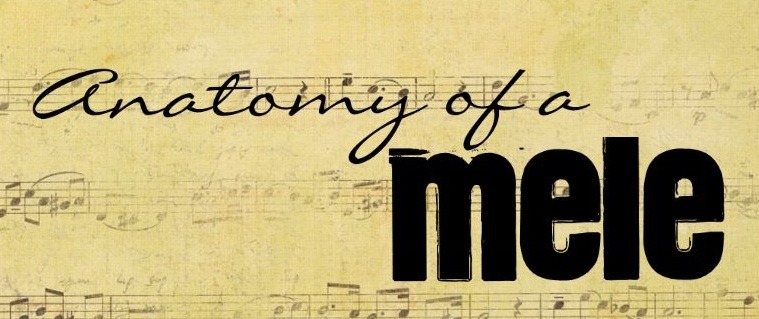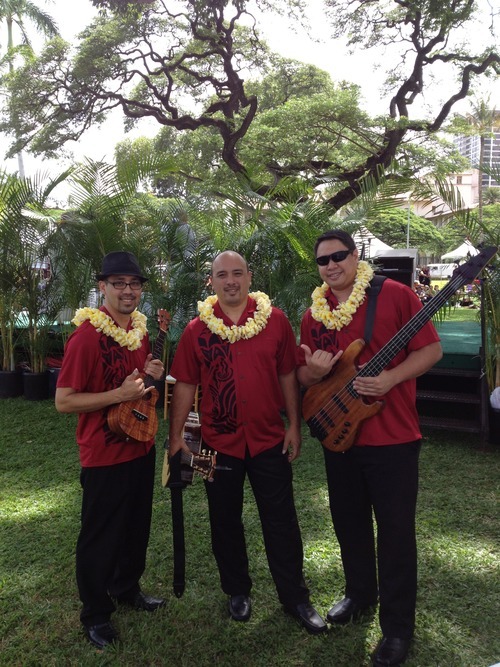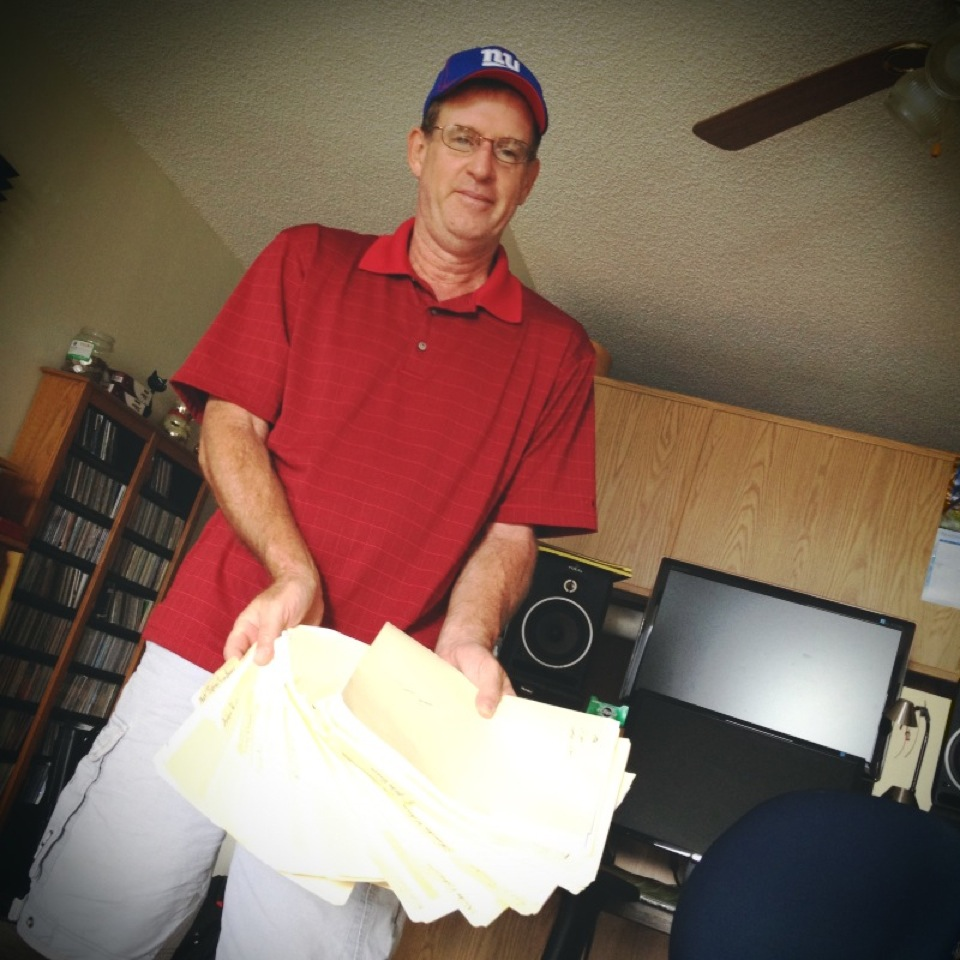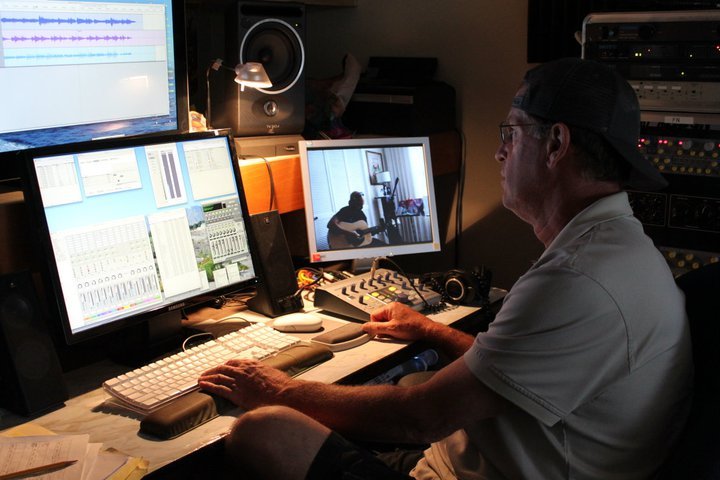Volume 6: Kuana Torres Kahele & Dave Tucciarone


Aloha kākou nā hoaloha! Welcome to my ongoing blog-series “Anatomy of a Mele”. Each month I will feature a different artist/producer pairing and go behind the scenes to closely examine one song off of one of their albums, giving the reader a tiny glimpse into the sometimes magical, sometimes arduous creative recording process. The ultimate goal is to give YOU, the fans and music lovers a little insight into what it’s like to be in the studio. Hopefully it will inspire, educate and encourage the next generation of music makers!
For this issue I am ecstatic to showcase multi Nā Hōkū Hanohano award winner and co-founder of the Hawaiian perennial super-group Nā Palapalai, Kuana Torres Kahele!
The mele is a track entitled “Wāikāhuli” from his debut solo album Kaunaloa.
Enjoy!
The mele: “Waikahuli” from Kuana’s debut solo album “’Kaunaloa”.
Purchase Kuana’s Complete CD “Kaunaloa” at mkaloha.com
Purchase Kuana’s Complete CD “Kaunaloa” at mele.com
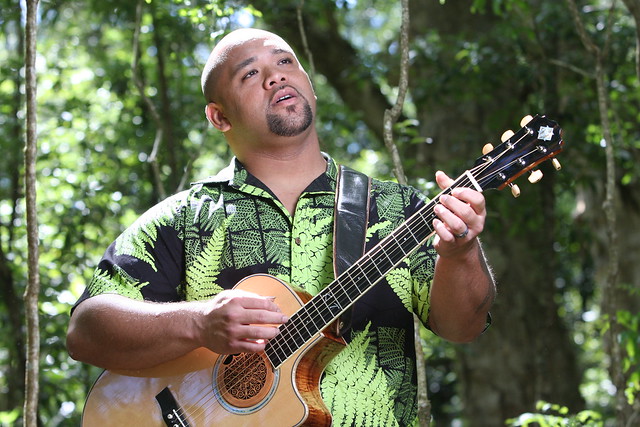
Steven Espaniola: Wāikāhuli is an incredibly beautiful mele and my personal favorite from your recent solo debut. Can you tell me about the origin of the song and the inspiration behind it?
Kuana Torres Kahele: Wāikāhuli was written for the love of my life. It was inspired while we were on a trip in Italy. During the course of our trip, I started to compare the many beauties of Italy to that of my home on Hawaiʻi Island. This is what sparked the lovely mele.
The title translates loosely into “Daisy Flower”. Can you talk about that and if there is any kaona that you’d like to share about the song?
Wāikāhuli is a tiny little blossom that can be found on the slopes and prairies of Mauna Kea. Such a beautiful tiny blossom to behold. Being that my love is a haole from Oregon. I used the “Daisy” or the “Wāikāhuli” as a reference to their beauty. I thought it was pretty fitting to use being that the flower itself is from the mainland and had found its way here to Hawai'i.
Where was “Wāikāhuli” recorded?
Seventh Wave Studio with Dave Tucciarone.
Why did you decide to record a solo album?
The recording of Kaunaloa was actually a promise fulfillment. My mom always wanted me to record a solo album. Even before recording with my group Nā Palapalai. But I was headstrong and eager to jump on the wagon with my group instead. After my mom passed away in 2002, I’ve been meaning to do this solo album as a promise fulfillment to her but only got around to do it in 2011. That’s how this album came about.
You’ve known über producer Dave Tucciarone for many years, but this was technically the first “complete” project you recorded with him. Can you describe this experience vs. the first Nā Palapalai recording?
The experience was both humbling and magical. In the past with the group, we never really had that much say in what we were doing or how the album should sound, mixing, etc. This time around, I did what I wanted and followed my heart.
It sounds like the mele begins with 2 or 3 (fingerstyle) guitars which is normally very difficult to do without sounding cluttered. You pull it off beautifully and you can clearly hear each instrument. Can you talk a little more in depth about the arrangement?
You know what the funny thing is? I don’t really remember! Ha ha!!! If I’m not mistaken, yes there are three guitars. The first 2 guitars are playing finger style/rhythm and the last guitar, lead. The first guitar is playing in a standard open A, the second guitar is playing in a capo’d A, and the last guitar is playing lead fills around all of that.
Explaining how I come up with arrangements is kind of difficult. Every time I compose a song, each song speaks for itself and its magic slowly begins to unfold. When I pick up my instrument and begin to play it for the first time. I begin to hear exactly what the song wants or needs. Such is the case with this song, Wāikāhuli. It may sound a bit weird, but it [Wāikāhuli] told me what to do.
I’m a believer in “less is more” and “just because you can, doesn’t mean you should” philosophy when I record. This applies perfectly to this mele. The arrangement is simple and beautiful and crescendos only at the very end at the second ha'ina. Can you talk about that crescendo when the bass and other instrumentation come in and the song modulates?
The crescendo at the end coincides with the translation of the song. Wāikāhuli is a declaration of love. The first three verses compare the beauties of landscapes, sky, rain, flowers, etc. to that of my love. That is why those verses are so soft and subtle. But the last verse, “Puana aʻe nei ka Liʻa”, is the part that I declare my unconditional love. Thus, the climatic build at the end.
Describe your songwriting process.
My mind is always filled with a 1001 melodies. I’m always eager to write a song and looking for a reason or inspiration to write it, whether that be for the land, sea, a person, etc. Often the process begins with an infatuation. For example, meeting a beautiful person for the first time, visiting a beautiful part of Hawaiʻi. Or a mele inoa where I write songs in honor of people or land. This is kind of how it works for me.
Do you usually come up with music or lyrics first when you haku mele?
They usually come together. But like I said earlier, I have a 1001 melodies in my head. But when I write, the melody seems to find its way to the lyrics. They know exactly how to apply themselves as if they had a mind of their own.
Is there a particular method or mindset that you like to be in when you record? How was the difficulty level of this song versus the others on Kaunaloa? Any obstacles along the way?
I have no particular method in recording other than having my act together and everything that I need, set and ready to go before walking into that studio. I do, however, often think of my mom when I sing. It always helps make my music sound that much better.
Wāikāhuli was a bit more complex of a recording compared to other songs on the album. Only because the song had three intricate guitar parts and four vocal harmony parts (two of which were moving parts). There were no obstacles, but this song was probably the most complex.
Is there a hula to “Wāikāhuli”?
Yes there is! In my travels throughout the world, I’ve seen many, many hālau dance this song.
What type of guitar do you use?
I mostly toggle between a McPherson and a Bourgeois.
Were any studio musicians or guest artists used on Kaunaloa?
Yes, there were. I had the honor of having the following artists on my album:
- Alan Akaka - Steel Guitar
- Kumu Hula Snowbird Bento - Vocals on Waimanu I Ka Lauoha
- Hoʻo Apo - Piano on Keanakolu, Ke Anu O Waimea & Nā Pua Laumāewa
Any anecdotal studio or blooper moments you wish to share?
Ha ha, to be honest, not really! When I’m in the studio, I’m there to work! Not to dilly-dally!
Any lucky charms or superstitions when in the studio?
Not for me.
Who is your biggest role model or influence in music?
My mom was and still is my biggest role model
Any words of wisdom you would like to give to aspiring musicians who want to “break into the biz”?
Always remain humble! No matter where music takes you. In music, the road is long and often has many forks in it. Remaining humble and pono will definitely see you through and help in choosing the right path for yourself.
What’s currently in your iPod? Five albums.
- Hui ʻOhana
- Dennis Pavao
- Genoa Keawe
- Andrea Boccelli
- The Pahinui Brothers
Tell us a “betcha didn’t know” tidbit about yourself.
I betcha didn’t know that I was a former construction worker for many years!
Can you talk about the popularity of hula and Hawaiian music in Japan?
I have been traveling to Japan now for over 20 years. I’ve seen the popularity of Hula grow exponentially during this time. Hawaiian music has definitely become an equally important components in Japan as well. The Japanese people love our culture and especially our Hula, with thousands of hālau here in Japan. They strive in excellence and knowledge to the “Hula” and its music. They’re Hawaiian at heart and I don’t think hula or Hawaiian music will ever die here in Japan. But instead, continue to grow.

Steven Espaniola: Do you remember when you and Kuana first met?
Dave Tucciarone: We first met during the recording sessions for the first Nā Palapalai cd, Makani Olu Olu.
Kuana describes Wāikāhuli as being one of the more complex songs to record from Kaunaloa. Were there any obstacles or challenges that you remember from the session?
Yes, on many levels. But for me, we just start at the beginning and try to plot out the recording sequence of instrument parts and vocals. So, we assembled the guitar parts first and played through the arrangement, including the modulation and key change later on in the song. Once we had the guitars, we added the bass, then started the vocals. I always like the vocalist to be singing to the full dynamic of the arrangement. Because Kuana played all of the instruments, we had to wait until all of that was tracked. Then after the lead vocal, we added the backgrounds. The key for me was to slowly build the dynamics to the middle, then open it up to the end.
I brought this up with Kuana as well. Can you talk about the guitars throughout the song? I hear 3 distinct parts, which is normally very difficult to do without sounding cluttered. Every guitar is clear and has a dynamic purpose. How did you achieve that?
There is a lead acoustic guitar playing throughout the song, so we spent some time working out the performance of each lick so it fit just right. We used different guitars on the doubled rhythm part so as to separate them by timbre. And, it’s not always a straight double track. Sometimes Kuana would play more freely and create a contrary rhythm part. Kuana has the great ability to combine different instrumental parts in an arrangement without making them sound cluttered. This ability is even moe apparent in his vocal arrangements.
What equipment do you use to record?
I use a Focusrite ISA430 mic preamp and a Universal Audio LA-610 Signature Edition mic pre. My main microphone is a Neumann TLM170, but I use the AT4040 and Shure SM81 also. I’m a Mac, and I run Digital Performer 7.24 on a quad core 2.8GHz.
Are there any methods that you use to achieve results from artists?
I always encourage artists to do their best or even exceed what they think their limit is. In order for an artist to bring their best representation to the studio, I expect them to prepare as much as possible outside of the studio. I remind them in a good way that we’re all going to listen to what the end result is for the rest of our lives, so try to make it as good as possible.
Describe the dynamic between Artist & Producer
There has to be trust between artist and producer for good things to happen in the studio. It can be a very personal expression that the artist is trying to convey, and a sensitive producer will recognize when to push, to hold back, to suggest a break, to change a line or a chord. The artist has to feel that the producer is knowledgeable and caring enough to be making good, intuitive decisions about every aspect of every part recorded in every song.
Any anecdotal studio moments?
Haha, well nothing I can remember or repeat here! Nah, we always enjoy working together, and we have our fair share of laughs in-between sometimes intense sessions. Kuana always comes prepared to the studio. He knows what he wants to do, does it in a short amount of time and works very hard at his craft.
Who do you most admire as a Producer?
Quincy Jones, Walter Afanasieff, George Martin, Hugh Padgham to name a few.
Any words of wisdom you would like to give to aspiring Engineers/Producers?
Listen, listen, listen! Use your ears and learn to use your software as if it were an extension of yourself. To seriously become a producer/engineer, you really have to approach it like you would any serious endeavor of study. That is, you have to put the time and focus into it if you want to have a chance of competing with the million other guys doing it.
What advice would you give to youngsters wanting to break into professional recording?
Don’t ever stop trying if it’s your passion. Give 1000% and always seek knowledge through practical application, resources on the internet or books on producing/engineering, as well as dialog with others who have the same passion. For 99 out of 100 people, do not go to one of those expensive recording schools with the expectation of graduating and getting placed in a career job in music. It’s not going to happen. Follow trends in the music biz and be open to all forms of music that are good. There is something to learn from all of these. Lastly, learn an instrument if possible. It will help you communicate in the language of music with other musicians.
What’s currently in your iPod? Five albums.
- Talking Book- Stevie Wonder
- Speak for Yourself- Imogen Heap
- Led Zeppelin I, II, III
- What Matters Most- Barbara Streisand
- Beatles White Album
Mahalo nui to Kuana, Dave and Mountain Apple Company!
For more info on Kuana, please visit:
mountainapplecompany.com/kuana
For more info on Dave, please visit:
Questions compiled by Steven Espaniola
Editing assistance by Lynn Piccoli
Stay tuned for next month’s artist/producer pairing!!! A hui hou!

